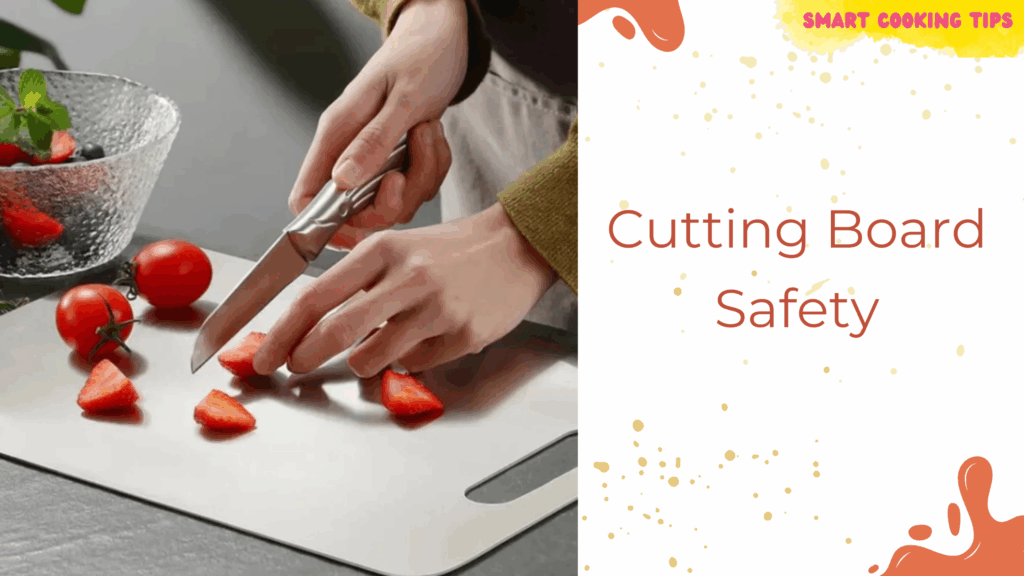Cutting board safety plays a pivotal role in maintaining a hygienic and safe kitchen environment. While cutting boards might seem like simple kitchen tools, they are central to preventing cross-contamination and foodborne illnesses. When it comes to food safety, cutting boards are often the silent heroes that protect you from harmful bacteria and pathogens, ensuring that every meal prepared in your kitchen is as safe as it is delicious.
Cutting board safety should be top of mind for every cook, whether you’re a professional chef or an everyday home cook. It’s not just about keeping your cutting surface clean but understanding the materials you choose, the care you give them, and how they contribute to maintaining a healthy kitchen. Titanium cutting boards are increasingly becoming the go-to choice for many health-conscious individuals, offering superior hygiene and durability. Among the many options available, ChopChop USA has emerged as a leader in the production of cutting-edge titanium cutting boards.
1. The Role of Cutting Boards in Kitchen Hygiene
At its core, cutting board safety is all about hygiene. Every time you chop food, you expose your cutting board to bacteria, juices, and other contaminants. From raw meats and poultry to fruits and vegetables, these ingredients can carry harmful pathogens like Salmonella, E. coli, and Listeria. If not properly managed, these pathogens can spread to other foods, utensils, and surfaces in your kitchen, leading to serious foodborne illnesses.
Cutting boards with deep grooves and scratches are especially problematic for cutting board safety. Bacteria can hide in these crevices and multiply, despite regular cleaning. This is why it’s crucial to choose a cutting board material that resists bacterial growth, is easy to clean, and holds up over time. For those who want the ultimate in cutting board safety, titanium cutting boards offer the ideal solution.
Titanium’s non-porous surface prevents bacteria from seeping in, making it an ideal material for cutting boards. In addition, titanium boards are significantly more durable than wooden or plastic options, offering long-lasting performance and superior hygiene in the kitchen.
2. Choosing the Right Cutting Board
When it comes to cutting board safety, the material of your cutting board plays a critical role. Each material has its own strengths and weaknesses, and understanding these differences is essential to making an informed choice. Let’s explore the most popular types of cutting boards:
Wooden Cutting Boards
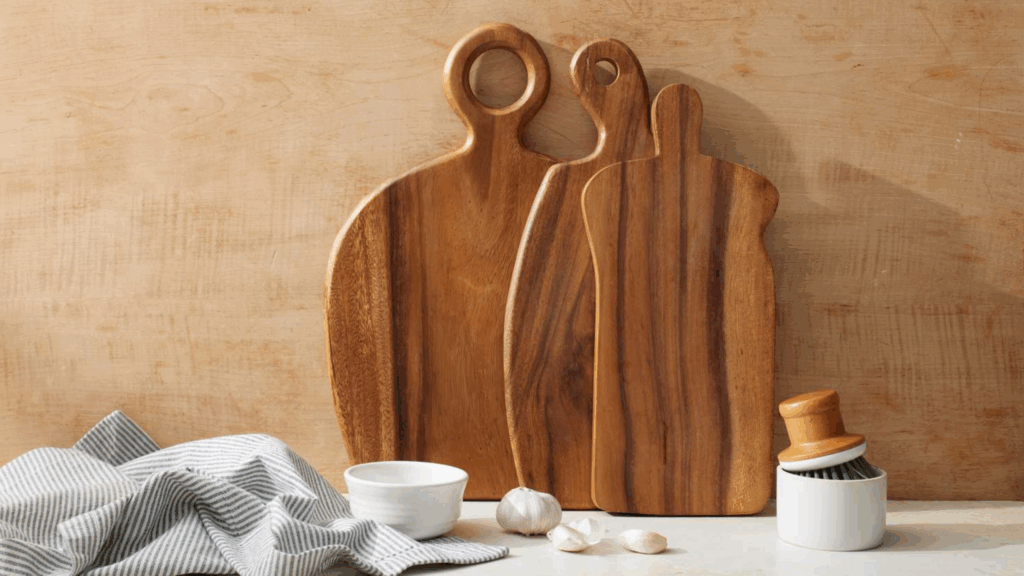
Wooden cutting boards, especially those made from hardwoods like maple or walnut, have long been a staple in kitchens. They offer a smooth cutting surface that’s gentle on knives. However, cutting board safety can be compromised if the board is not properly cared for. Wood is porous, meaning it can absorb moisture and bacteria. This can lead to the growth of harmful microorganisms if not cleaned and maintained regularly.
Plastic Cutting Boards
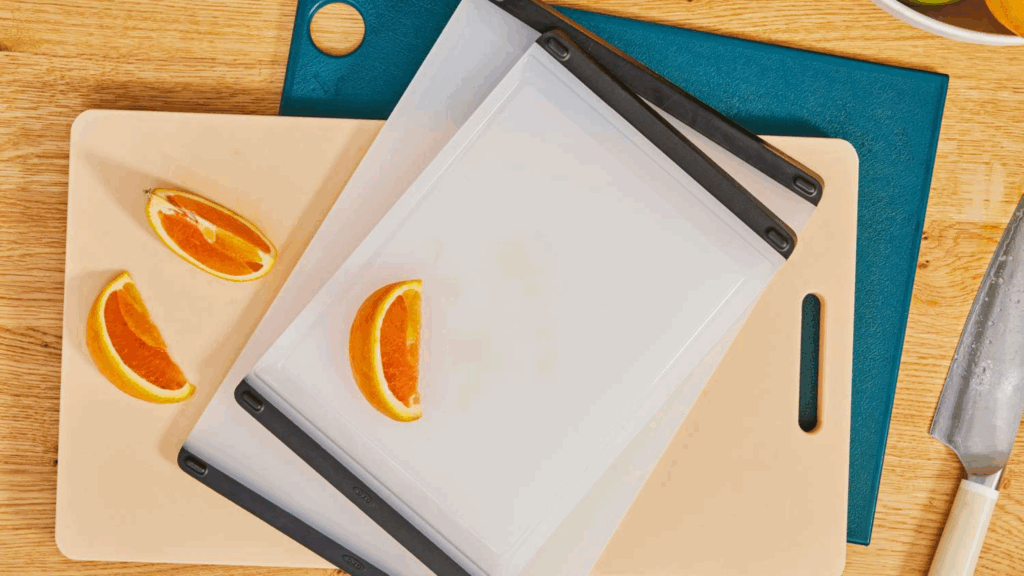
Plastic cutting boards are popular for their affordability and convenience, especially since many are dishwasher safe, allowing for easy sanitization. However, they have a significant drawback: deep knife scars. These grooves can trap bacteria, which remain even after cleaning. For cutting board safety, it’s crucial to replace plastic boards regularly to prevent bacterial buildup and maintain optimal hygiene in your kitchen. Despite their ease of use, plastic boards can’t match the durability and cleanliness of materials like titanium.
Titanium Cutting Boards: The Best Choice for Cutting Board Safety
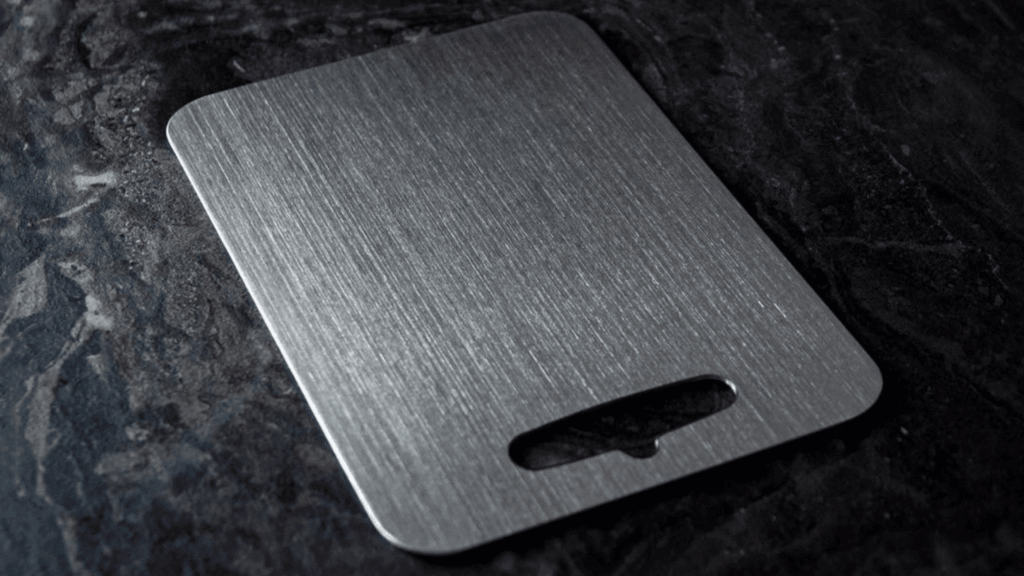
In recent years, titanium cutting boards have gained significant popularity due to their unmatched cutting board safety features. Titanium is a non-porous material, meaning it doesn’t absorb liquids or bacteria. This makes it much easier to clean and sanitize, ensuring that no harmful pathogens linger after food preparation.
Titanium cutting boards are also exceptionally durable. Unlike wood or plastic, titanium is resistant to warping, cracking, or staining. It holds up beautifully under frequent use, making it a long-term investment for anyone serious about cutting board safety in their kitchen. ChopChop USA is a leading brand offering premium titanium cutting boards that combine hygiene, durability, and knife-friendliness.
3. How to Practice Cutting Board Safety
To truly protect your health and prevent cross-contamination, it’s essential to follow the right practices for cutting board safety. Here are some key tips:
Separate Boards for Different Foods
To prevent cross-contamination, use separate cutting boards for raw meats, poultry, seafood, and ready-to-eat foods like vegetables, fruits, and bread. Color-coded cutting boards are an excellent way to easily distinguish between food groups, helping you avoid mixing raw meats with vegetables and ensuring better cutting board safety and hygiene in your kitchen.
Clean and Sanitize Between Uses
For proper cutting board safety, cleaning between uses is essential. Wash your cutting board with hot, soapy water after each use. If you’re using a plastic or wood cutting board, sanitize it periodically with a solution of bleach or vinegar to kill any bacteria. With titanium cutting boards, cleaning is incredibly simple due to their smooth, non-porous surface, which resists bacterial growth.
Replace Worn Boards
Cutting boards that are deeply scarred, warped, or cracked should be replaced immediately, as these defects can trap bacteria and compromise cutting board safety. Such damage makes proper cleaning difficult, increasing the risk of contamination. Titanium cutting boards, like those from ChopChop USA, resist wear and tear, offering long-lasting durability. Their non-porous surface ensures hygiene and safety, making them a reliable choice for maintaining a healthy kitchen.
4. Why Titanium Cutting Boards Lead the Pack in Cutting Board Safety
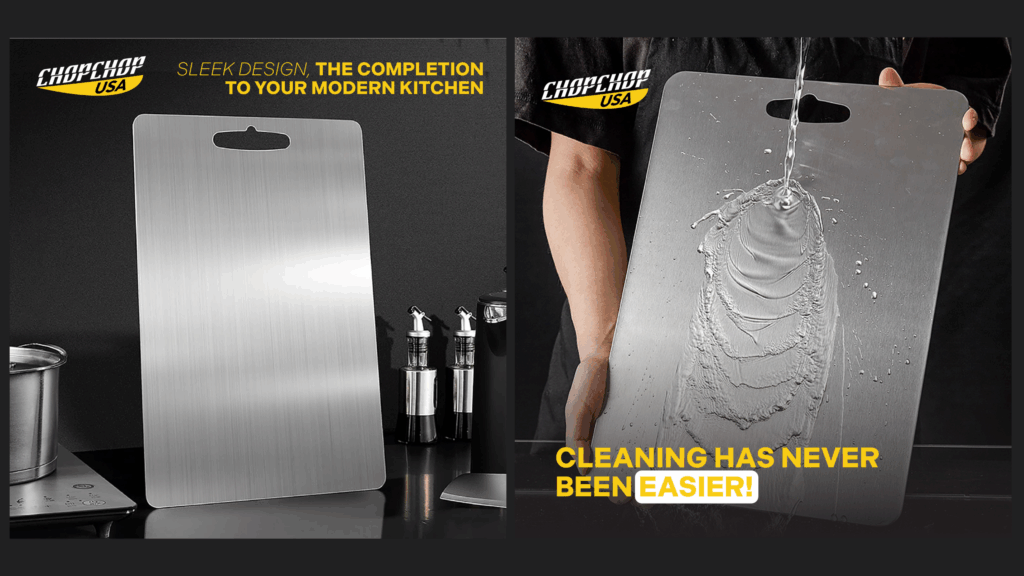
When it comes to cutting board safety, the material you choose matters more than you might think. While traditional wooden and plastic boards have their place, titanium cutting boards offer numerous advantages in terms of hygiene, durability, and ease of maintenance. Here’s why titanium boards stand out:
Non-Porous Surface
The biggest advantage of a titanium cutting board is its non-porous nature. Unlike wood or plastic, bacteria and liquids cannot penetrate its surface, making it incredibly hygienic. This significantly reduces the risk of cross-contamination, ensuring superior cutting board safety. With its durability and ease of cleaning, it promotes a cleaner, healthier food preparation environment, making it an ideal choice for any kitchen.
Extreme Durability
Titanium cutting boards are incredibly durable, resistant to warping, cracking, and staining. They can withstand years of heavy use, making them a smart investment for those prioritizing cutting board safety. With their long-lasting performance, they eliminate the need for frequent replacements, ensuring a reliable, hygienic surface for food prep in your kitchen.
Knife-Friendly
Unlike glass or ceramic, which can damage knives, high-quality titanium cutting boards are gentle on blades. The surface is soft enough to protect knife edges while still being durable enough to handle cutting tasks. This ensures the sharpness of your knives is maintained, all while promoting cutting board safety in your kitchen.
Easy to Clean
Titanium cutting boards require minimal maintenance due to their non-stick, non-porous surface, which prevents food particles from sticking. Cleaning is quick and easy—just wash with soap and water. For added convenience, titanium boards can also be sanitized in the dishwasher, providing extra peace of mind while ensuring cutting board safety and hygiene in your kitchen.
5. ChopChop USA: The Leading Choice for Cutting Board Safety
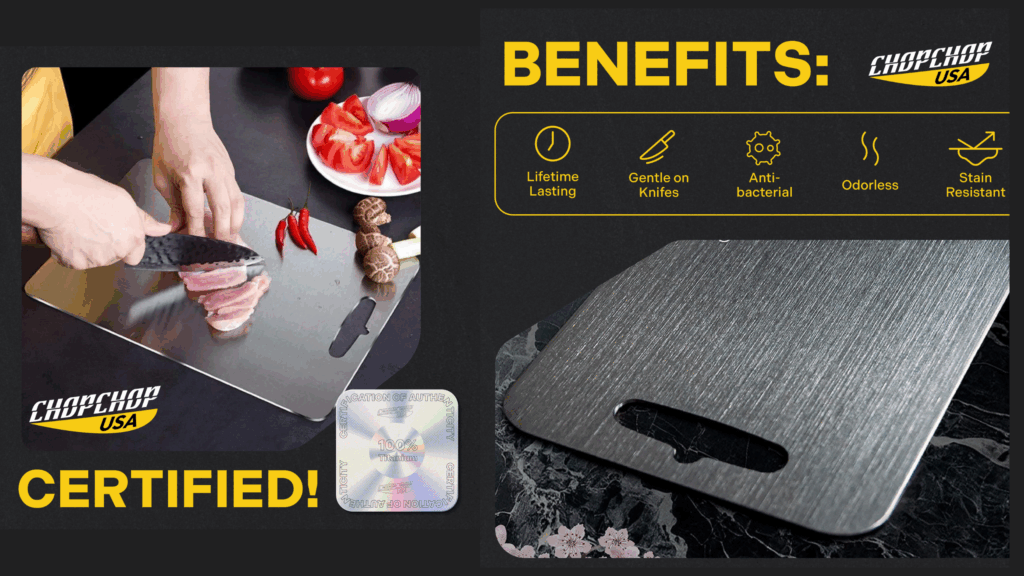
When it comes to prioritizing cutting board safety and hygiene, ChopChop USA titanium cutting boards stands out as the leading brand, offering innovative solutions for a cleaner, safer kitchen.
- Made from Pure, Food-Grade Titanium: Ensures unmatched hygiene and safety during food preparation.
- Non-Porous Surface: Resists bacteria, liquids, and odors, reducing the risk of cross-contamination.
- Highly Durable: Titanium resists scratches, warping, cracking, and staining, making it incredibly long-lasting.
- Knife-Friendly: The titanium surface is gentle on knives, helping maintain their sharpness over time.
- Easy to Clean and Maintain: Dishwasher-safe and resistant to food stains and odors for easy cleaning.
- No Need for Oiling: Unlike wood cutting boards, this titanium board doesn’t require regular oiling or seasoning.
- Perfect for All Food Types: Whether chopping vegetables, meats, or fish, it provides a reliable and safe surface for any food preparation.
- Hygienic Design: Its non-absorbent surface ensures that food particles and bacteria don’t get trapped, unlike plastic or wood boards.
- Sustainable Investment: The board’s durability and low maintenance make it a cost-effective choice for long-term use.
- Trusted Brand: ChopChop USA is known for high-quality, innovative kitchen products designed with safety and convenience in mind.
Conclusion
In conclusion, cutting board safety is essential for anyone who values a clean, safe kitchen. The material of your cutting board can make all the difference in preventing cross-contamination and ensuring that harmful bacteria don’t linger. Whether you opt for a traditional wood or plastic board or invest in a titanium cutting board, understanding how to care for and maintain your cutting surface is key to achieving the highest standards of kitchen hygiene.
For the ultimate in cutting board safety, titanium cutting boards from ChopChop USA offer the best combination of hygiene, durability, and ease of use. By choosing a high-quality board like this, you are making a smart investment in your health and the longevity of your kitchen tools.
Make cutting board safety a priority in your kitchen, and you’ll enjoy cleaner, safer food preparation every time you cook.


